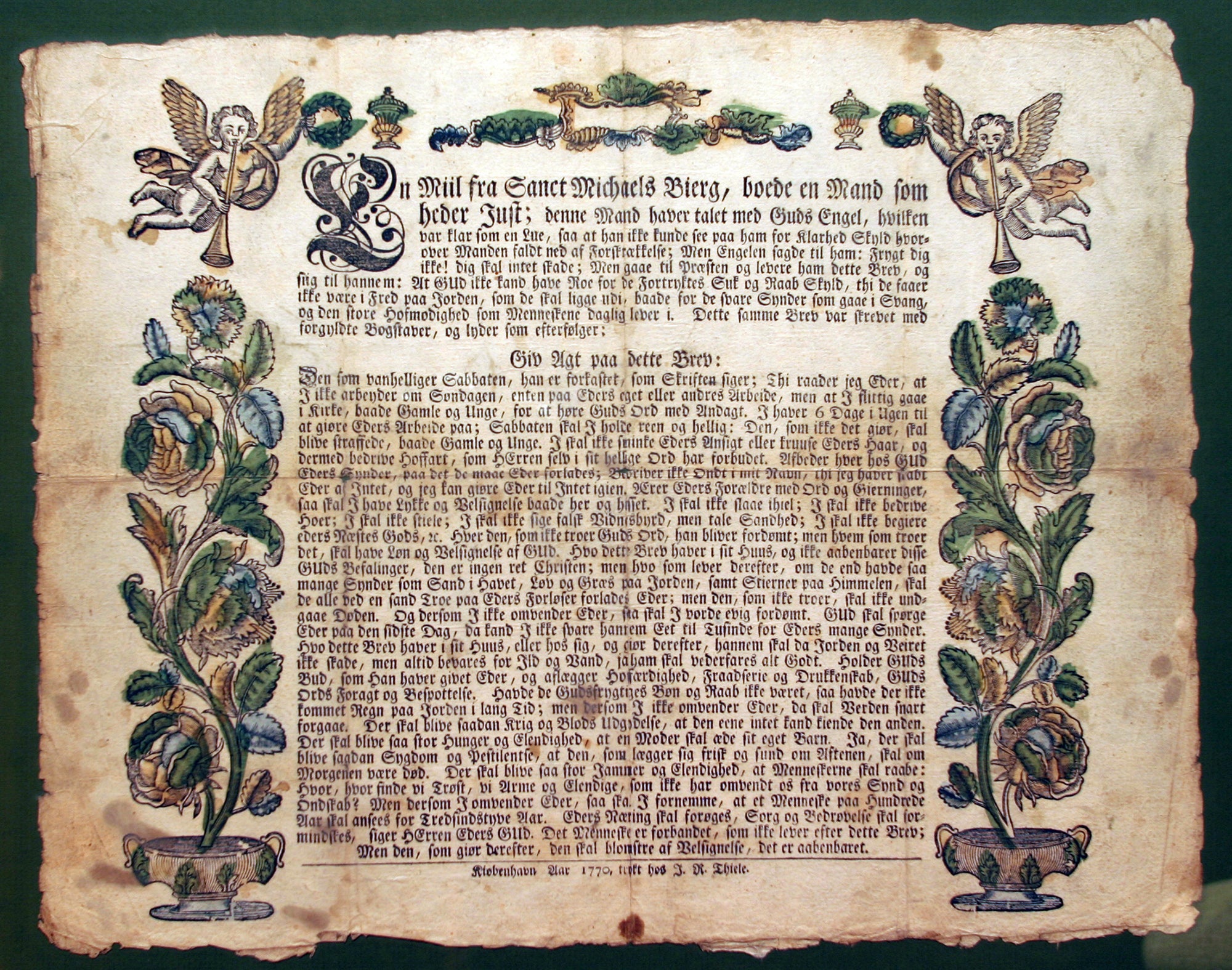The Museum of Ethnography in Budapest holds in its collection a scrap of paper discovered in a wallet found on a local street in the 1970s. Battered, handwritten, and full of spelling mistakes, the letter nonetheless represents an unbroken chain of history stretching back to at least the sixth century—and possibly earlier.
It’s a “heavenly letter,” or Himmelsbrief—that is, it purports to be a copy of a missive written by Christ himself and dropped from Heaven to the Earth below. Popping up pretty much everywhere in Christendom, “from Ethiopia to Iceland,” as religious studies scholar Jacqueline Borsje writes, and spanning more than a thousand years of human history, the heavenly letter can be seen as an early but extremely long-lived predecessor of today’s chain emails.
Some of these letters claim to have been originally written in gold letters by God; others, with Christ’s blood. In one version of the story, reports Borsje, as angels carried the letter down to Rome, the Earth shook, sending rocks and trees flying; St. Peter’s grave burst open, and the Pope, who was in the middle of saying mass, looked down and saw the miraculous letter on the altar. Other tellings have the letter land in Jerusalem, Bethlehem, or elsewhere, and the popes, kings, and queens referenced in the text were freely swapped in and out over time, notes historian of the book Curt F. Bühler.
Throughout their long history, heavenly letters were dogged by controversy. Occasionally they were preached from the pulpit (perhaps with a few additions thrown in about the importance of paying one’s tithes), but in other contexts they were considered false and blasphemous. Charlemagne, for instance, ordered that all copies should be burnt. As Borsje writes, “One can trace this Letter by its official rejections.”
So, what did a heavenly letter have to say? It varies from version to version, but one common rendition is called the “Sunday Letter” because it commands readers to keep Sunday free from work and threatens terrible punishments for those who disobey. For instance, Borsje describes a copy that circulated through Ireland, in which Christ warns that anyone who rides a horse on Sunday will find that horse transformed to fire between their legs in Hell. He also speaks of the brucha, terrifying creatures with flaming eyes and skin covered in iron bristles, sent to punish people who transgress on Sunday’s rest. The danger they pose, however, seems relatively tame: they go into vineyards and cut down the vines, then roll around and stick the grapes onto their bristles to steal them away.

On the other hand, anyone who follows the instructions of the letter is offered great rewards, in Heaven and on Earth. And, in classic chain-letter style, it often promised blessings to those who copy and spread the message.
In time, the heavenly letter evolved into a kind of amulet. Copies promised to protect those who carried them against not just bodily harm, but even false accusations and unfair punishments. As language and literature scholar Rosanne Hebing writes, such a letter offers an opportunity to analyze the material context of medieval charms. Hebing argues that the heavenly letter is
a type of charm that is inextricably linked with the physicality of the written word. The fact that it presents itself as a letter…implies that the charm proper is necessarily a physical object containing written content. The physical letter itself has the power to protect or heal the user of the charm. In that sense, the Heavenly Letter as a charm is similar to nonverbal charms—that is, objects used as charms. Like these nonverbal charms, the majority of Heavenly Letter charms state that they need to be worn on the body as well.
In other words, though the heavenly letter was a verbal charm, dependent on its words for its power, the materiality of the missive was also essential to its efficacy. People might wear a roll containing the text on their bodies or hang it from their doorway. Some versions were even used as “birthing girdles,” wrapped around women’s bodies in advance of giving birth as a form of magical protection.
Weekly Newsletter
It’s hard to write about something with such a long history; one can only skim the surface. Just imagine the sheer amount of paper devoted to versions of this text, over the course of more than a millennium: hand-inked manuscripts with gold-leaf touches, crude broadsheets printed by the thousands, amuletic rolls battered from being wrapped around pregnant bellies, hasty scribbles on scraps of paper.
In 1941, shortly before the United States entered World War II, one local Pennsylvania paper ran a copy of the heavenly letter; future soldiers, conceivably, could have clipped it from the paper and carried it with them as they were shipped out. The heavenly letter had taken another leap—this time into newspaper pulp.
Two Tips for Teaching:
Explore the history of chain letters:
Support JSTOR Daily! Join our membership program on Patreon today.







